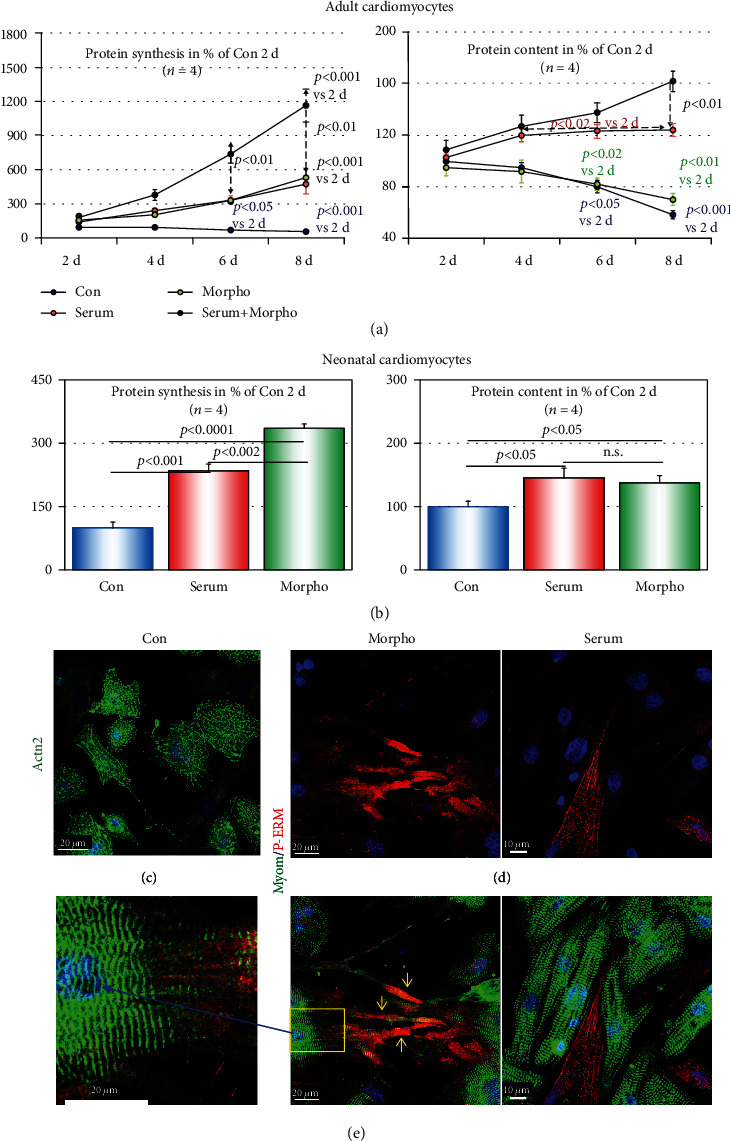Figure 3.

Endothelial morphogens induce atrophy of adult cardiomyocytes but hypertrophic growth of neonatal myocytes. Con are albumin-treated control cultures. Serum indicates serum stimulation, and Morpho specifies treatment with endothelial morphogens for the indicated time in days (d). All values are calculated in % of Con at day 2. (a) The time course of protein synthesis and protein accumulation (total protein content) of adult cardiomyocytes reveals significant increases after serum and serum plus morphogen stimulation. Morphogen-treated cultures show a decrease in protein content despite an elevated protein synthesis. (b) In neonatal cardiomyocytes, protein synthesis and protein content are significantly increased after stimulation for 2 days with serum or morphogen. (c, d) Confocal images of 2-day-old neonatal cardiomyocytes. (c) Unstimulated cardiomyocytes (Con) reveal a diffuse pattern of sarcomeric α-actinin (Actn2) and an absence of cross-striation. (d) Reestablishment of cell-cell contacts as well as the formation of mature sarcomeres (myomesin) is clearly visible after serum and morphogen stimulation. Note the long extensions in morphogen-stimulated cultures (yellow arrows). (e) Cross-striation is visible in the magnified image (blue arrow and yellow rectangle).
